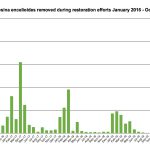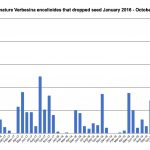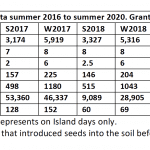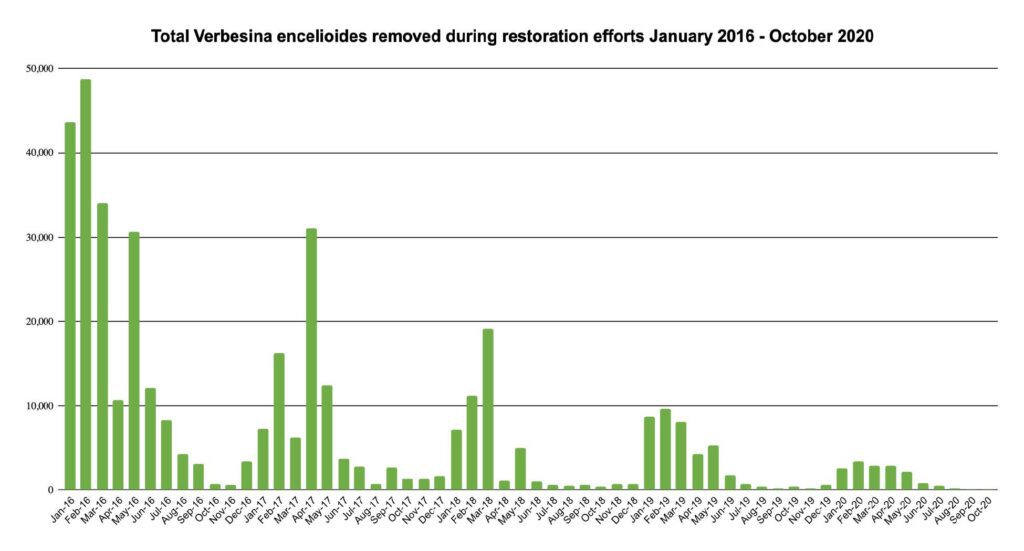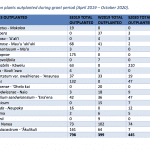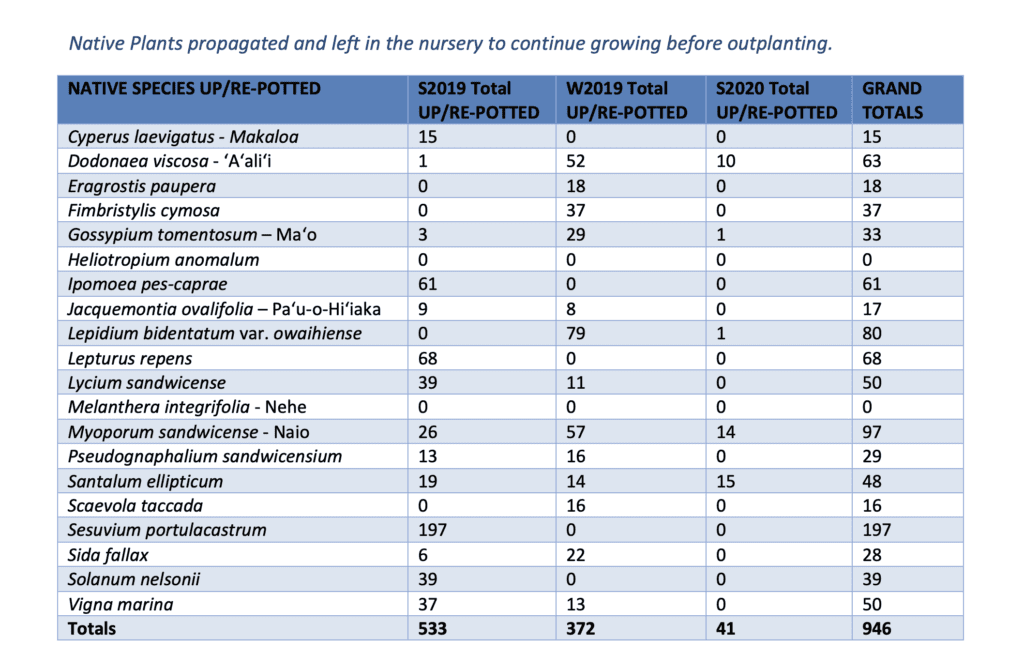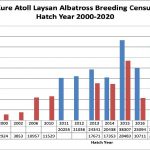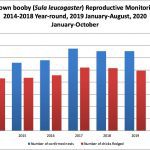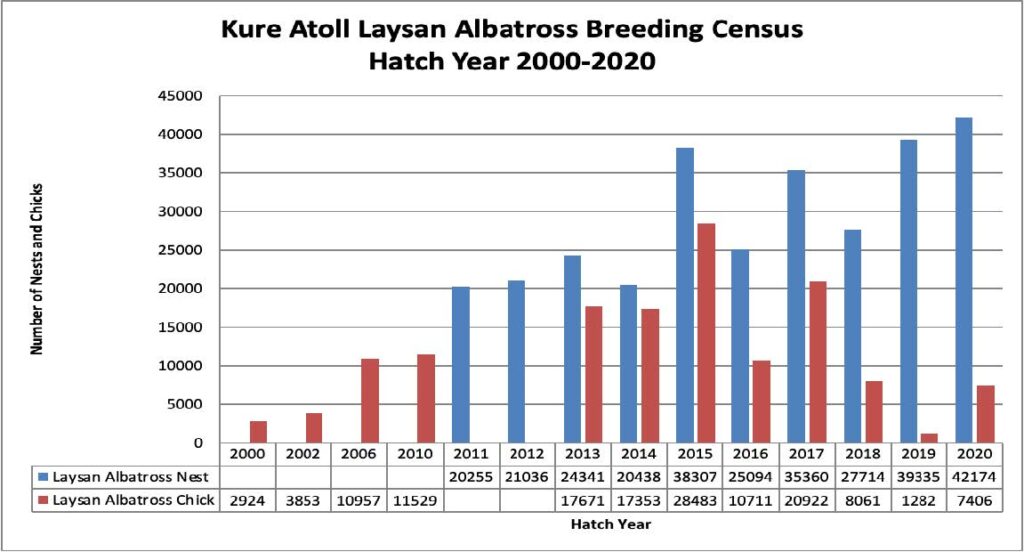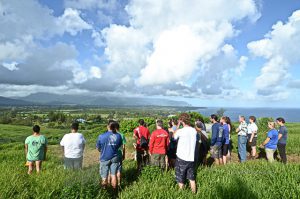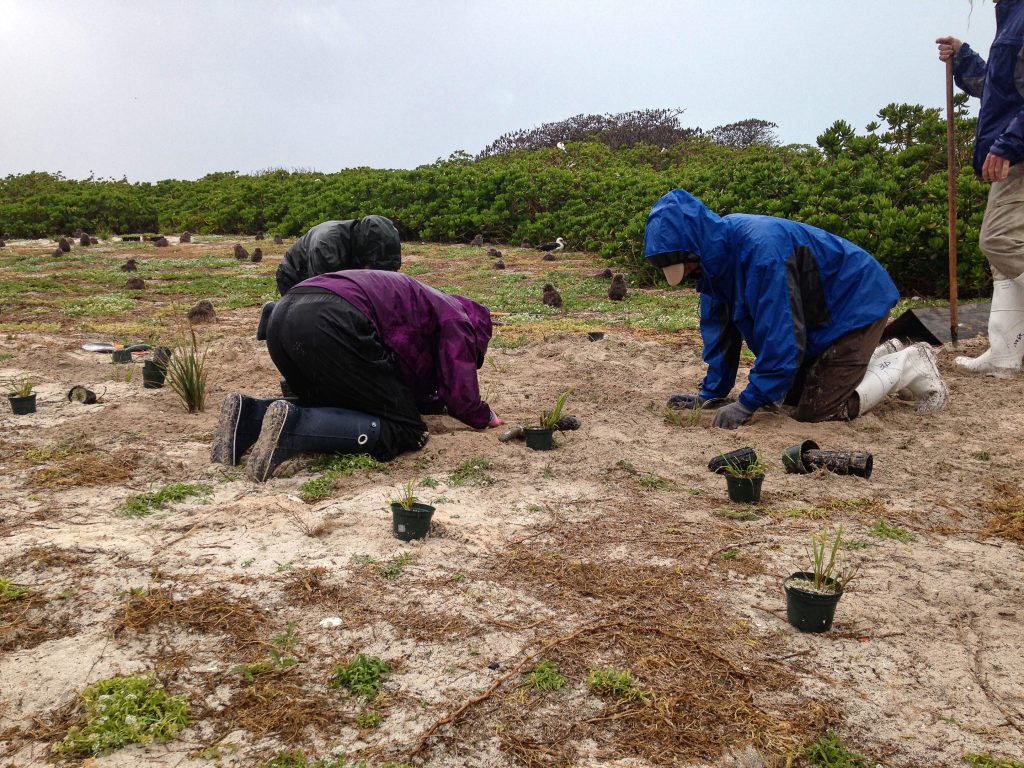General Information
To ensure state personnel and volunteers are working efficiently, management aims to measure each field season’s aim to increase plants that support ground and burrow-nesting seabird habitats.
Seasonal efforts are documented around annual growth periods and measures 4 designated plots for percentages of Verbesina, other non-native plants, and native plants.
The Kure team randomly selects 2-meter quadrat sites within 4 plots—plots that were heavily-impacted by Verbesina–and assess how many of each plant covers what percentage in each selected quadrat.
